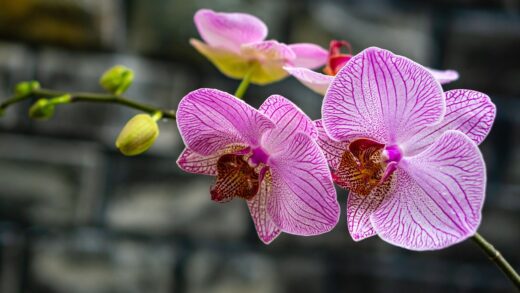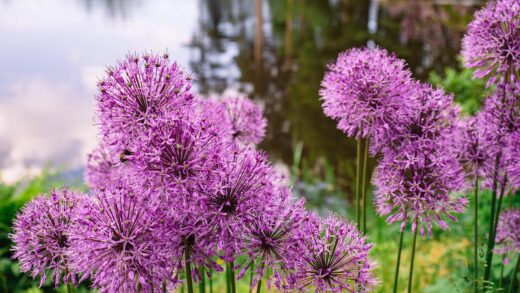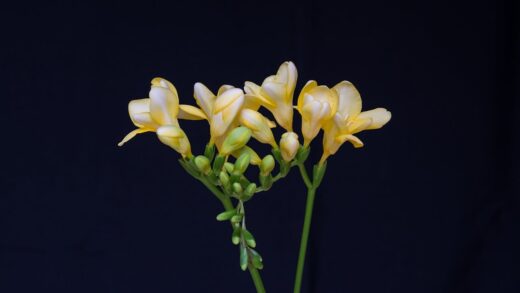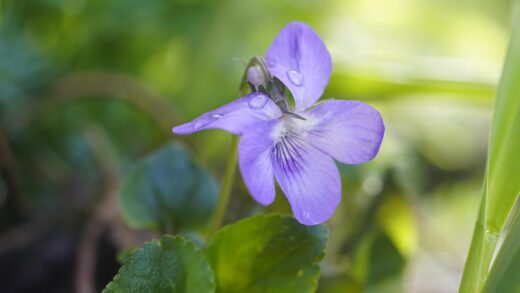The vitality and ornamental value of rose campion are inextricably linked to the amount of sunlight it receives. As a species native to open, sun-drenched habitats, it has a physiological requirement for high light levels to perform at its best. Providing adequate sun exposure is fundamental to achieving the plant’s most desirable characteristics: a compact, sturdy form, intensely silver foliage, and a profuse, long-lasting display of its signature magenta flowers. Understanding the nuances of its light needs is therefore not just a recommendation but a prerequisite for its successful cultivation.
At its core, rose campion is a classic full-sun perennial. This designation means it requires a minimum of six hours of direct, unfiltered sunlight each day. This light energy is the fuel for photosynthesis, the process that drives all plant growth. When provided with ample sunlight, the plant can efficiently produce the carbohydrates needed to build strong stems, develop a healthy root system, and, crucially, initiate the formation of flower buds. Insufficient light directly translates to diminished energy production, leading to a host of predictable and undesirable outcomes.
The intensity of the plant’s foliage colour is also directly influenced by sunlight. The beautiful, silvery-white appearance of the leaves is due to a dense covering of fine, soft hairs known as trichomes. This feature is an adaptation to high-light, dry environments; the trichomes reflect a portion of the solar radiation, which helps to keep the leaf surface cool and reduces water loss. In lower light conditions, the plant has less need for this protective covering, and as a result, it produces leaves that are greener and less densely pubescent, diminishing one of its key ornamental features.
While the “full sun” recommendation is a reliable guideline, there can be some flexibility depending on the climate. In regions with extremely hot and intense summer sun, a location that offers some light shade during the hottest part of the afternoon can actually be beneficial. This respite can help to reduce heat and water stress on the plant. However, in more temperate or cooler climates, the goal should always be to maximize the amount of direct sunlight the plant receives throughout the day to ensure its health and a spectacular floral performance.
The importance of full sun
For rose campion, a location in full sun is the cornerstone of vigorous growth and prolific flowering. Receiving at least six hours of direct sunlight daily allows the plant to photosynthesize at an optimal rate, producing the energy required for all its metabolic processes. This energy is invested in building a strong cellular structure, resulting in sturdy, upright stems that can easily support the abundant flowers without flopping over. This structural integrity is a hallmark of a healthy, sun-grown specimen.
The most dramatic impact of full sun exposure is seen in the plant’s flowering. High light intensity is a primary trigger for flower bud initiation in many perennial species, including rose campion. Plants situated in a sunny location will produce a significantly greater number of flowers over a longer period compared to those grown in shadier conditions. The colour of the flowers may also appear more vibrant and saturated. A sun-drenched rose campion is a beacon of intense colour, whereas a shade-grown plant will offer a much more subdued and disappointing display.
Beyond the visible benefits to its structure and flowering, full sun also plays a critical role in disease prevention. Sunlight and the associated air movement help to quickly dry moisture from the plant’s woolly foliage after rain or morning dew. This rapid drying time is crucial for a species susceptible to fungal diseases, as it denies pathogens like powdery mildew the damp conditions they need to establish and spread. A shady, damp location with poor air circulation is a far more hospitable environment for these diseases.
Therefore, when selecting a planting site, the primary consideration should be the availability of sunlight. An open, south-facing or west-facing aspect is typically ideal in the Northern Hemisphere. It is important to consider the entire growing season; a spot that is sunny in the spring may become shaded as nearby deciduous trees leaf out. Careful observation of the light patterns in the garden throughout the day and across the seasons is essential for choosing the perfect, sun-drenched home for rose campion.
Tolerance of partial shade
While full sun is the undisputed ideal, rose campion can tolerate conditions of partial shade, but this tolerance comes with noticeable compromises. Partial shade is typically defined as an area that receives between three and six hours of direct sunlight per day. A plant growing in such conditions will likely survive, but it will not thrive with the same vigour as its counterparts in full sun. Gardeners should have realistic expectations for the performance of rose campion in a partially shaded location.
The most immediate and obvious effect of reduced light is on the plant’s habit and form. In an effort to reach for more light, the plant will exhibit a phenomenon known as etiolation. Its stems will grow longer, thinner, and weaker, resulting in a leggy and open appearance. This lanky growth makes the plant much more prone to flopping, particularly after heavy rain or in windy conditions, often requiring staking to remain upright. The overall impression is one of untidiness, a stark contrast to the dense, sturdy clump formed in full sun.
Flower production is also significantly impacted by shade. A rose campion in partial shade will produce far fewer flowers, and the blooming period may be shorter. The plant simply does not generate enough energy reserves to support a lavish floral display. The intensity of the flower colour might also be slightly muted. Essentially, the plant prioritizes its survival and vegetative growth over the energy-intensive process of reproduction (flowering) when light is a limiting factor.
The characteristic silver foliage will also be less pronounced in partial shade. The plant will produce leaves that are larger, thinner, and greener, with a less dense covering of the reflective hairs. While the foliage will still have a grey-green cast, it will lack the striking, almost white appearance that makes it such a valuable foliage plant in a sunny border. For gardeners who value rose campion as much for its leaves as for its flowers, this reduction in foliage quality is a significant drawback of planting in shade.
Impact of light on foliage and flowering
The quantity and quality of light have a direct and profound impact on both the foliage and flowering of rose campion. The plant’s two most prized ornamental features are directly mediated by its exposure to sunlight. The iconic, intensely silver foliage is a direct physiological response to high light levels. The dense covering of trichomes (leaf hairs) serves as a natural sunblock, reflecting excessive solar radiation and protecting the leaf tissues from damage. This adaptation is most pronounced when the plant is grown in bright, direct sun.
As light levels decrease, the selective pressure for this protective covering is reduced. Consequently, the plant allocates its resources differently, producing larger, greener leaves with fewer trichomes. The larger surface area and higher chlorophyll concentration (indicated by the greener colour) are adaptations to capture more of the available light in a shaded environment. While this is an effective survival strategy for the plant, it results in a loss of the ornamental silver quality that gardeners desire. Therefore, to achieve the most brilliant silver foliage, maximizing sun exposure is essential.
The influence of light on flowering is equally critical. Rose campion is a long-day plant, meaning that the initiation of flowering is promoted by the long days and short nights of late spring and early summer. However, day length alone is not sufficient; high light intensity is also required to fuel the process. Adequate sunlight ensures the plant has the energy to develop a multitude of flower buds. Insufficient light, even with the correct day length, will severely limit the plant’s ability to bloom.
Furthermore, the duration of the bloom period is tied to the plant’s ongoing energy production. In a sunny spot, the plant can continue to produce new flowers for many weeks, especially if it is diligently deadheaded. In a shadier location, the initial flush of blooms will be smaller, and the plant will not have the energy reserves to continue producing new flowers for an extended period. The floral display will be brief and sparse, fundamentally altering the plant’s contribution to the garden’s summer display.
Climatic considerations
The general recommendation for full sun can be refined based on the specific climate in which the rose campion is being grown. The intensity and duration of sunlight vary significantly with latitude and altitude, and these differences can influence the ideal placement of the plant. What constitutes “full sun” in a cooler, more northern climate is very different from “full sun” in a hot, arid, southern region.
In cooler temperate climates, such as those found in the UK, the Pacific Northwest, or New England, the goal should be to provide the plant with as much direct sun as possible throughout the day. The sun’s rays are less intense in these regions, and the risk of scorching or heat stress is minimal. In these locations, a position in an open border with no overhead shade is perfect. The plant will benefit from every available hour of sunlight to achieve its best form and flowering.
Conversely, in climates with very hot, intense summers, such as the American Southwest, the Mediterranean, or inland Australia, some protection from the harshest sun can be beneficial. In these regions, a location that receives full sun in the morning and some light, dappled shade during the peak heat of the afternoon can be ideal. This protects the plant from excessive heat and water stress, which can cause wilting and scorching, even in a drought-tolerant species. The plant will still receive more than the minimum six hours of sun required, but it will be spared the most punishing rays.
It is also important to consider the interplay of light with other environmental factors, like humidity. In hot and humid climates, such as the southeastern United States, the combination of intense sun and high humidity can create stressful conditions. While full sun is still needed for good flowering, ensuring excellent air circulation becomes even more critical to help prevent fungal diseases that thrive in such an environment. Spacing plants appropriately and avoiding enclosed, stagnant locations is key.

















